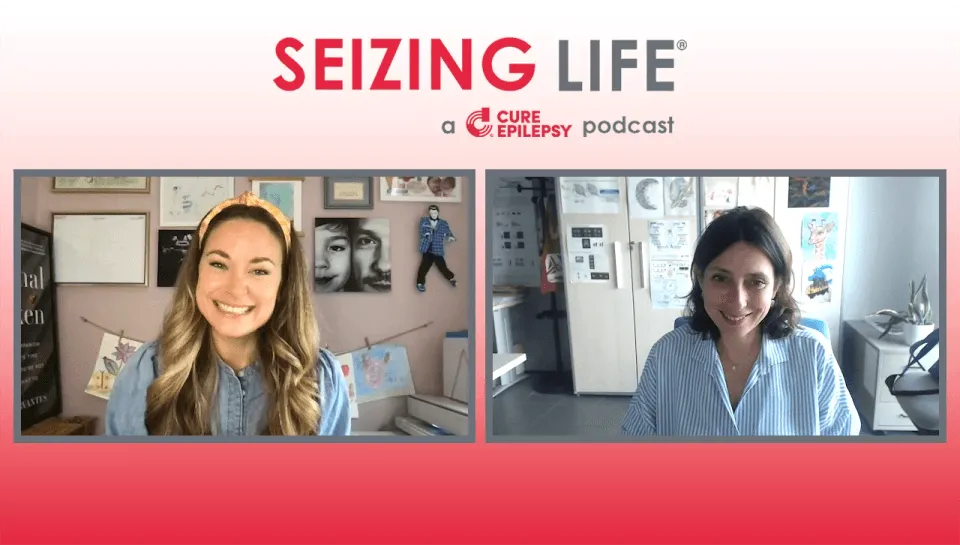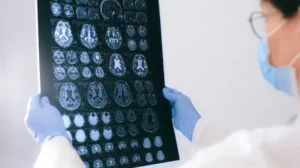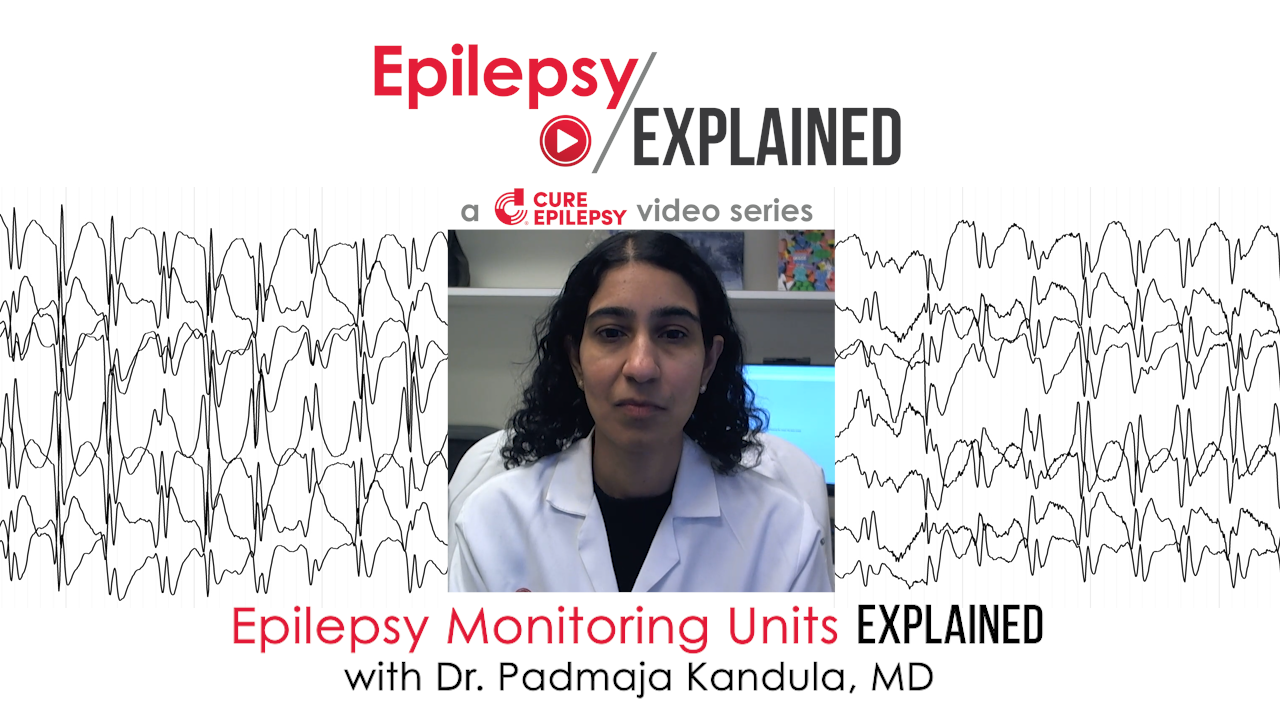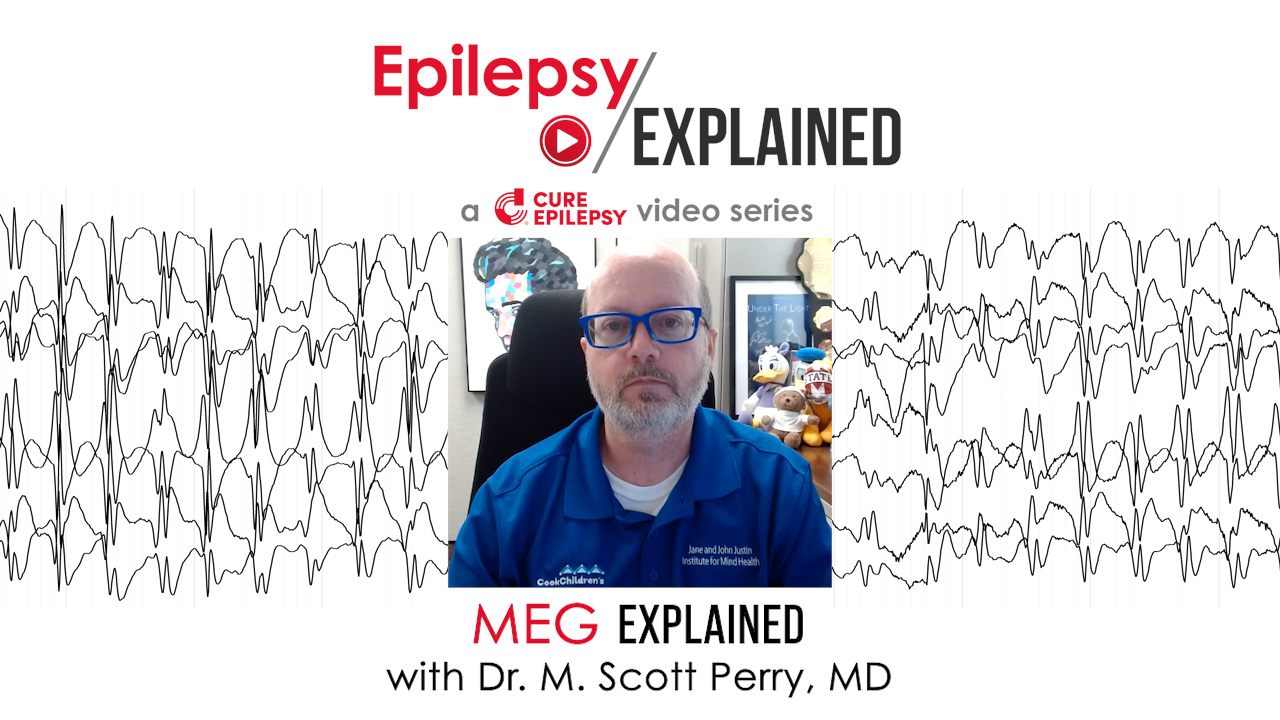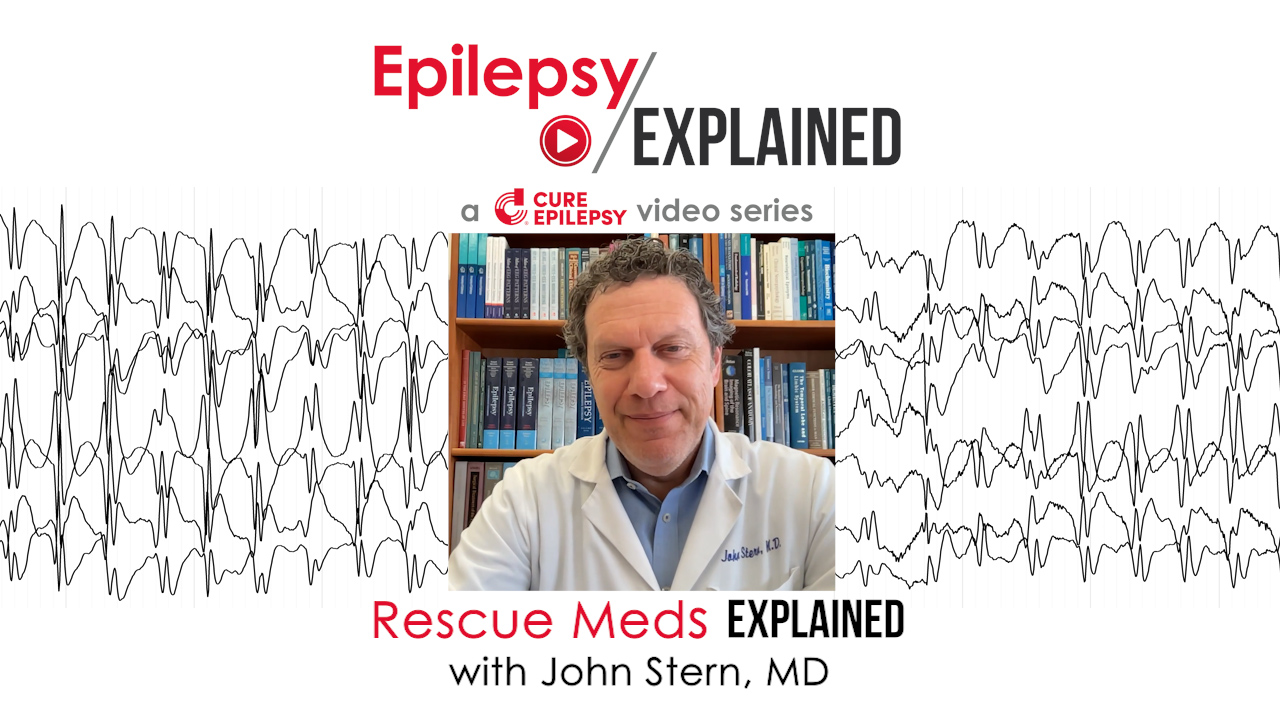Epilepsy Monitoring Units: What to Expect and How to Prepare
This month on Epilepsy Explained we answer your questions about Epilepsy Monitoring Units or EMUs for short. Dr. Padmaja Kandula, Chief of Epilepsy and Clinical Neurophysiology at Weill Cornell Medical Center, explains what an epilepsy monitoring unit is, why a person might go to an EMU, what to expect while there, and how long a person may need to stay in an EMU. Dr. Kandula also provides some tips for parents in preparing a child to spend time in an EMU.
In “Epilepsy Monitoring Units Explained”, Dr. Kandula answers the following questions:
0:16 What is an Epilepsy Monitoring Unit and what is its purpose?
2:00 Why might a person need to go to an epilepsy monitoring unit?
3:51 Do I need to be weaned off my medications prior to entering the epilepsy monitoring unit, or will medications be reduced while in the EMU?
5:09 What should a person expect when staying in an epilepsy monitoring unit?
7:22 What should I bring with me to the EMU?
8:45 Do you have any tips for parents in preparing their child to go to an epilepsy monitoring unit?
9:57 I’ve heard of people staying in epilepsy monitoring units for weeks because they don’t have a seizure. How long should I plan to be in an EMU, and can I decide to leave if I don’t wish to be there any longer?
11:23 How long should it take to get test results from an EMU? Is it immediate or is there a wait time for results after being discharged?
Look for new episodes of Epilepsy Explained on the third Wednesday of every month on CURE Epilepsy’s YouTube Channel and here on our website.
If you would like to submit questions for future episodes of Epilepsy Explained, please go to: https://www.cureepilepsy.org/epilepsy-explained/
Video Transcript
What is an Epilepsy Monitoring Unit and what is its purpose?
Dr. Padmaja Kandula:
An epilepsy monitoring unit, or what we call the EMU for short, is actually a specialized unit in a hospital, so it’s an inpatient setting. It’s a very specialized unit, a little different than other parts of the hospital. There’s a lot of recording equipment, so one of the pieces is a video camera, so there’s a multi-angle camera in order to capture the seizure or the target event. There also is brainwave recording or what we also most commonly call EEG or electroencephalography. And in most centers too, we also do concurrent cardiac monitoring. So it’s continuous EKG that’s put on your chest and that’s done in tandem with the brainwave recording. This is an area of the hospital that personnel, technicians, nurses, doctors, social workers, have actually added qualification in the management of persons with epilepsy.
We also are part of the National Association of Epilepsy Centers. So there are strict and stringent rules that are national guidelines that epilepsy monitoring unit centers follow. So you get really good quality national standard care. It is also an area where we can characterize your problem in a faster manner instead of coming through the emergency room, it’s an elective admission. Medications and treatment can be done safely and effectively under all these kinds of monitoring that we just discussed.
Why might a person need to go to an epilepsy monitoring unit?
Dr. Padmaja Kandula:
So an adult or child are often referred to the Epilepsy Monitoring Unit and it’s usually in an elective fashion. Generally the treating neurologist will be the person that will bring the patient into the epilepsy monitoring unit, and this usually entails an office visit or consultation before actually coming into the unit so the physician has a good idea of the patient problem before the patient comes into the inpatient unit. Outside physicians such as primary care doctor, or pediatrician or a general practitioner can also refer and usually in that particular situation, if there’s a need to come into the Epilepsy Monitoring Unit, they will do an office visit and refer to the neurologist who then can expedite the admission. There are really a lot of perks to coming in the Epilepsy Monitoring Unit. It can prevent having to go to the Emergency Room Department if a diagnosis is unclear. Oftentimes as we see these days, there’s a long wait to get in to see a neurologist. In some cases, if the primary doctor is concerned, the diagnosis is critical. You can actually directly admit to the hospital. It also gives us an idea of studying your problem where it might be at its peak. Some people have seizures during certain times of the month known as menstrual-related seizures or catamenial epilepsy. In other cases, children or people who are working also want to limit how much time they miss from work. That’s always a concern. So that could be timed where part of the admission can be over the weekend, or over holidays or what’s optimal for the patient in order to capture the event or the seizure in question.
Do I need to be weaned off my medications prior to entering the epilepsy monitoring unit, or will medications be reduced while in the EMU?
Dr. Padmaja Kandula:
Actually, intuitively, patients think they need to be weaned off the medication ahead of time, but generally we don’t advise that. And the reason for it is the full purpose of the monitoring unit is to capture your target seizure or event. We want to do that in a safe manner and we don’t want you to have your seizure at home while you take off your medication. So we advise not touching the medication and having the medication safely weaned off in the hospital under EEG guidance and cardiac guidance. This is the safest manner to do it and it’s actually one of the benefits of the Epilepsy Monitoring Unit to be able to see the target event very quickly. Seizures and many events are intermittent and one way of actually provoking the seizure and seeing what we need to see is actually taking the medication off rapidly. That can only be done in the hospital. And the reason for that is every patient gets an IV. So in case medications need to be restarted in an emergency manner, we can certainly do so in a safe way quickly through the IV.
What should a person expect when staying in an epilepsy monitoring unit?
Dr. Padmaja Kandula:
So while you’re in the Epilepsy Monitoring Unit, the key piece of that is obviously the EEG. So our technical staff are there to greet you as you come into the room and apply the EEG electrode. So they’re put on the scalp with an adhesive and softly wrapped, so they’re put into place. Next they put the cardiac monitoring and that’s put onto the chest and then the video cameras are adjusted so the patient is in camera view. So we have optimal view when the seizure or the event occurs. There are other key portions of the EMU stay too.
In addition to monitoring, the nursing staff are also there to respond to patient push buttons. So patient will get the option to push a button if he or she feels a seizure is coming, a member can do so, or even a clinical staff member, the nursing staff and the clinical staff come into the room to do a really key portion of the test. They check the patient’s behavior, their level of alertness, they keep the patient safe as well. In the case of a larger seizure where there is maybe drop of the heart rate, increase of the heart rate or breathing issues, then what can be happening there is oxygen can be administered and the patient can be safely checked by the nursing staff. If there’s any problem with the electrodes on the head or technical staff actually check the integrity of the electrodes to make sure they’re sticking to the scalp and doing a good job. Especially the cases of pediatric patients who might be jumping or moving around.
But generally, the stay is pretty comfortable. A family member is welcome to stay with the patient, particularly if they’re pediatric or developmentally delayed or if they just want a family member with them. But we do want to be safe when we do the recording of the seizures and we don’t want falls or other issues. So we do advise people to stay close to the bed and once medications are re-initiated or when it’s safe to do so, we will extend ambulatory or walking around privileges. As long as you’re in the camera view.
What should I bring with me to the EMU?
Dr. Padmaja Kandula:
Well you’re going to spend some time in the EMU. Sometimes it’s a day or two, many times it could be longer up to a week. So we suggest a few things, bring something very comfortable, and usually clothing that has a button front. So if we have wires on the chest, it’s easier to maneuver by opening and closing the buttons on the front of the shirt. We also recommend bringing some personal toiletries. Some will be provided in the hospital, but if you have anything particularly you want, you can bring those in. But I think the most important thing probably to make sure you bring in is if you have any specialty medications that are not provided by the hospital, to make sure that you discuss that with your doctor ahead of time. Majority of medications are provided, but if something is specific, you want to make sure you have that in the hospital and we will administer it to you.
And lastly, I think entertainment is important. There are TVs in the room which patients are freely able to use, but it’s always nice to be able to have your iPad, your laptop and your phone to stream movies. You can even work in your room. A lot of people actually do remote work these days and get two things done at the same time.
Do you have any tips for parents in preparing their child to go to an epilepsy monitoring unit?
Dr. Padmaja Kandula:
Yes, there are tips both for the parents and for the patient in order to prepare themselves for the Monitoring Unit. We do tell the parents to be prepared that they may have to encourage their child to stay in the bed and also to keep them a little bit entertained just so we can get the EMU process underway and make it as efficient, and calm, and safe for the patient as much as feasible. So for young kids in particular, more entertainment, the better the recording that we have since they’re not moving around so much, bringing anything that they might like, such as toys, stuffed animals, coloring books, iPad to stream movies, those are all things that are very useful.
We also like to tell the patients and the parents that there will be technicians coming into your room and nursing staff that will be checking on you frequently and checking your electrodes in case they fall off so the parents understand there will be personnel going in and out the room maybe a little more often than in an adult room.
I’ve heard of people staying in epilepsy monitoring units for weeks because they don’t have a seizure. How long should I plan to be in an EMU, and can I decide to leave if I don’t wish to be there any longer?
Dr. Padmaja Kandula:
That’s a really good question. And also I guess a little bit of a fear on a patient’s part, but to kind of allay those fears and to give people the proper information, most patients, especially adult patients, are there a maximum of about a week. That’s the majority. Pediatric patients usually the length of stays a little bit shorter, especially for the younger children. We do understand that it’s tough for folks to sit still for a long time. That’s why it’s very key as the person gets admitted, that we use maneuvers to bring out the seizures, which will include reducing medications, sleep deprivation, whatever maneuvers that we can to do that. But everything is a day-to-day basis. So each day we round on the patient, we discuss the findings from the night before, and if the patient really does need to leave and it’s medically safe to do so, we need 24 hour notice and we reinitiate any medications that we have stopped to ensure the EEG looks good, that we at least have medication on board and then we can freely discharge the patient home. So it’s not jail and it’s an elective admission and we can revisit it on a day-to-day basis.
How long should it take to get test results from an EMU? Is it immediate or is there a wait time for results after being discharged?
Dr. Padmaja Kandula:
Well, the good news is that the Epilepsy Monitoring Unit have continuous video EEG, which means it’s live stream, live data. So the data is accumulated minute by minute, and there is an in-house team, so doctors, physicians, technicians, social workers, the entire medical staff rounds on the patient every day. That information is given to the family and the patient every day. So the previous EEG recording the night before is reviewed in detail and in the morning on rounds, that information is conveyed in final form to the family and family members. So each day the information is given, so there’s not a need to wait for the information for weeks on end. The final paper report may take a few days to up to a week to finalize in the record, but the patients and the family are given a plan every day. And at the end of discharge, they have a long-term outpatient plan as well.


